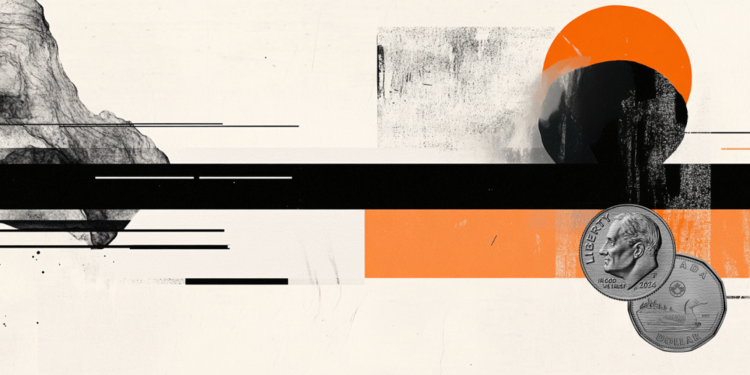USD/CAD steadies near 1.3950 as US Dollar receives support from trade optimism

- USD/CAD may appreciate due to optimism over progress in US-China trade talks held over the weekend in Switzerland.
- US Treasury Secretary Bessent characterized the discussions as a positive move toward narrowing the $400 billion trade imbalance.
- The CAD remains under pressure, weighed down by mixed labor market data and evolving expectations regarding the BoC’s policy outlook.
USD/CAD is attempting to hold its position for the fourth consecutive session, hovering around 1.3940 during Monday’s Asian trading hours. The pair remains supported as the US Dollar (USD) gains strength following reported progress in US-China trade talks over the weekend in Switzerland.
US Treasury Secretary Scott Bessent described the two-day talks in Geneva with Chinese officials as “productive,” with additional details expected in a Monday morning briefing. Currently, China is subject to US tariffs of 145%, while Beijing has imposed 125% tariffs on American exports. Commerce Secretary Howard Lutnick noted that the baseline 10% tariff on other countries will likely remain unchanged “for the foreseeable future.”
Although recession concerns persist, recent data suggest the US economy is more likely to head toward a slowdown rather than a full contraction. There are also no signs of accelerating inflation, with both CPI and PCE measures declining in March.
However, Federal Reserve (Fed) officials have expressed concerns about potential stagflation. Governor Michael Barr cautioned that increasing tariffs could disrupt supply chains, leading to higher inflation, weaker growth, and rising unemployment. As a result, investor sentiment remains cautious amid the risk of worsening trade tensions.
Meanwhile, the Canadian Dollar (CAD) is under pressure due to mixed labor market data and shifting expectations around the Bank of Canada’s (BoC) policy stance. Despite a stronger-than-expected job gain of 7,400 in April, the unemployment rate climbed to 6.9%—the highest since November—highlighting weaknesses in tariff-sensitive sectors like manufacturing.
Canadian Dollar FAQs
The key factors driving the Canadian Dollar (CAD) are the level of interest rates set by the Bank of Canada (BoC), the price of Oil, Canada’s largest export, the health of its economy, inflation and the Trade Balance, which is the difference between the value of Canada’s exports versus its imports. Other factors include market sentiment – whether investors are taking on more risky assets (risk-on) or seeking safe-havens (risk-off) – with risk-on being CAD-positive. As its largest trading partner, the health of the US economy is also a key factor influencing the Canadian Dollar.
The Bank of Canada (BoC) has a significant influence on the Canadian Dollar by setting the level of interest rates that banks can lend to one another. This influences the level of interest rates for everyone. The main goal of the BoC is to maintain inflation at 1-3% by adjusting interest rates up or down. Relatively higher interest rates tend to be positive for the CAD. The Bank of Canada can also use quantitative easing and tightening to influence credit conditions, with the former CAD-negative and the latter CAD-positive.
The price of Oil is a key factor impacting the value of the Canadian Dollar. Petroleum is Canada’s biggest export, so Oil price tends to have an immediate impact on the CAD value. Generally, if Oil price rises CAD also goes up, as aggregate demand for the currency increases. The opposite is the case if the price of Oil falls. Higher Oil prices also tend to result in a greater likelihood of a positive Trade Balance, which is also supportive of the CAD.
While inflation had always traditionally been thought of as a negative factor for a currency since it lowers the value of money, the opposite has actually been the case in modern times with the relaxation of cross-border capital controls. Higher inflation tends to lead central banks to put up interest rates which attracts more capital inflows from global investors seeking a lucrative place to keep their money. This increases demand for the local currency, which in Canada’s case is the Canadian Dollar.
Macroeconomic data releases gauge the health of the economy and can have an impact on the Canadian Dollar. Indicators such as GDP, Manufacturing and Services PMIs, employment, and consumer sentiment surveys can all influence the direction of the CAD. A strong economy is good for the Canadian Dollar. Not only does it attract more foreign investment but it may encourage the Bank of Canada to put up interest rates, leading to a stronger currency. If economic data is weak, however, the CAD is likely to fall.




